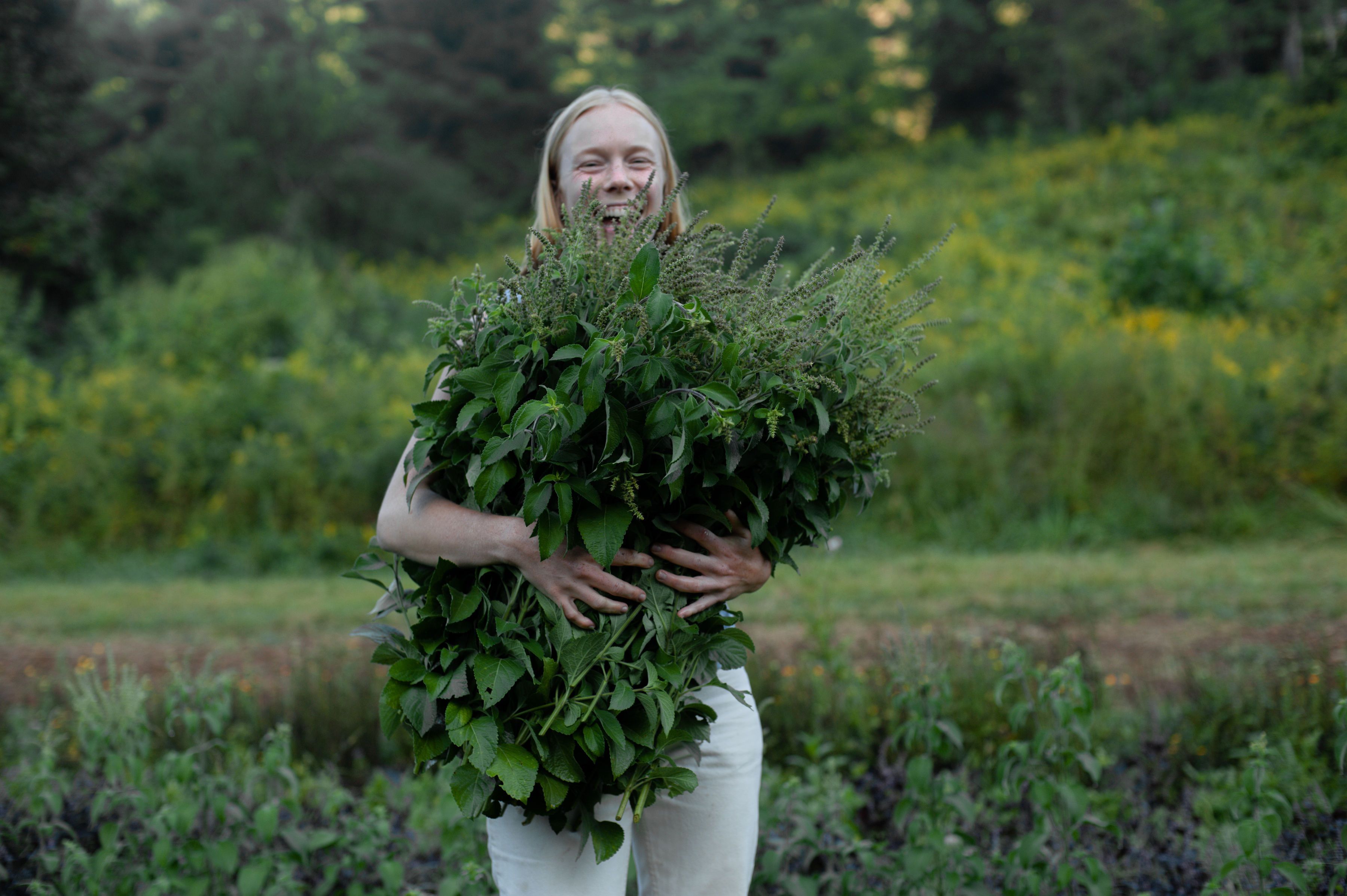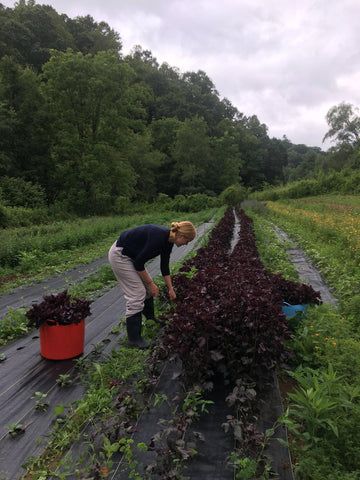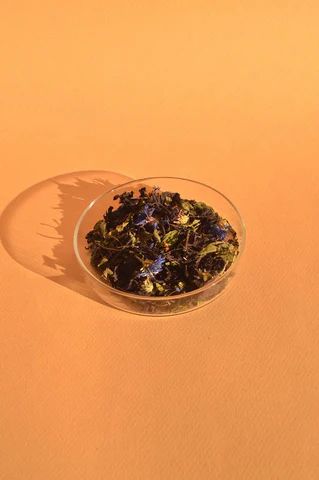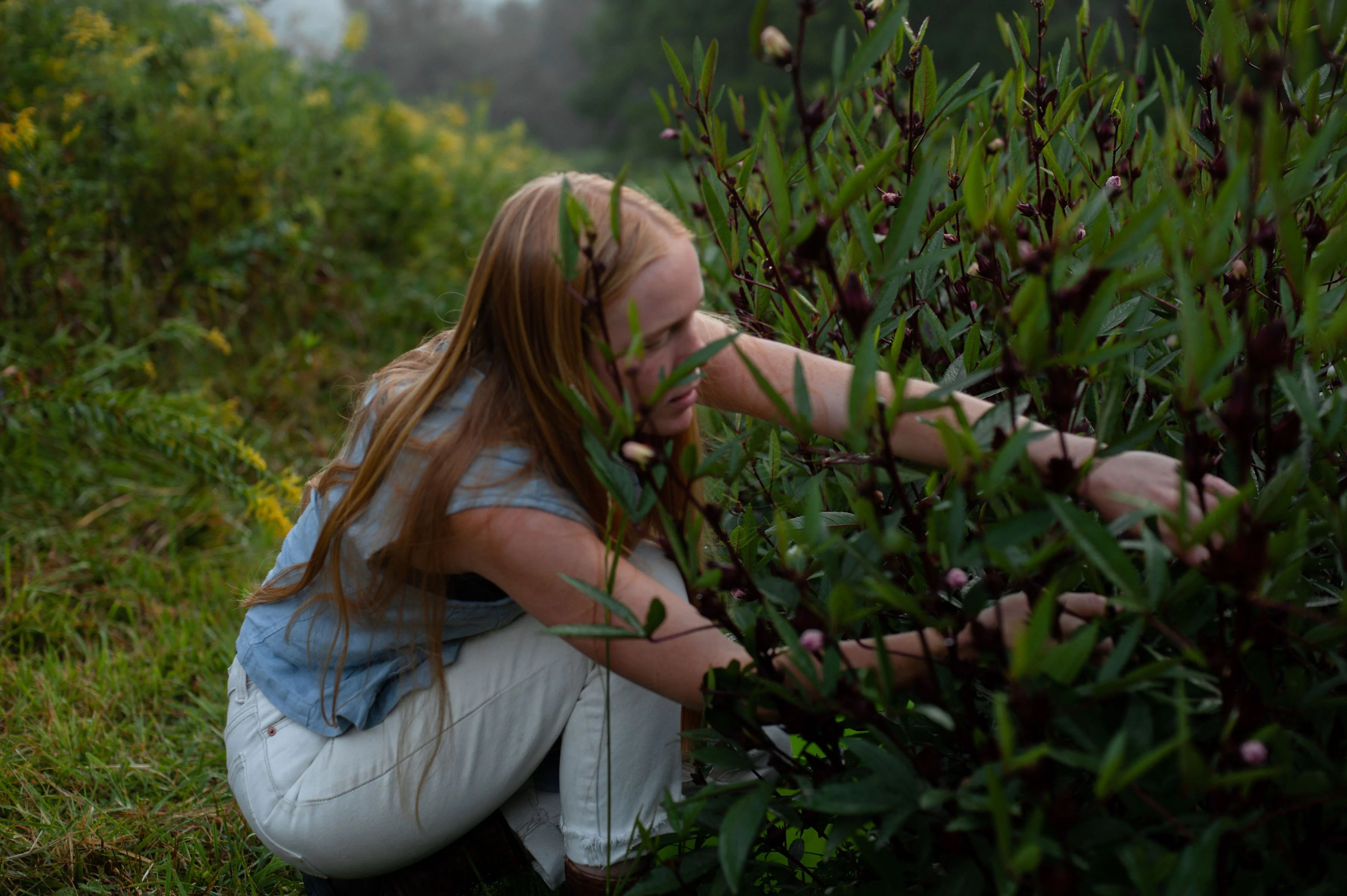
From the Earth: Heilbron Herbs
If you, like me, might perhaps prioritize external messaging over internal truth, January can be complicated. There's just so much advice around starting the new year on the right foot, let alone a new decade, that I find it difficult to tune out the crowd and hone in on what is best for me. New year, new me? New year, same me? Should I make goals, or should I intentionally not make goals and just see what happens? I find nature a useful ally in sorting through the cultural noise, as being outside provides a stillness that allows me to really sit with myself and cut through my own bullshit, if you will.
While I, theoretically, could start every day gaining valuable perspective on top of a mountain, I don’t. It seems more sustainable for me to add small, realistic moments of stillness and awareness into my daily routine.

Enter Saralyn Bellmer of Heilbron Herbs, an apothecary line based here in Western North Carolina. We’ve been carrying Saralyn’s products at East Fork for about a year now, though she’s known John, Alex, and Connie since the Madison County days (she even helped with a few shifts firing East Fork’s old wood kiln).
Saralyn’s tisanes have always been popular with our customers (you might have some Tulsi Trinity or Sun Rite in your kitchen as we speak), and last year she approached Connie about creating a custom tisane just for us. Saralyn brought several possible ingredients for the East Fork team to smell and taste, ensuring the process would be collaborative.
The end result, Color Therapy, is a blend of purple shiso, amrita tulsi, lemongrass, and blue cornflower. The taste is warm, earthy, and subtly sweet with notes of cinnamon, clove, cumin, and bubblegum. Tulsi, a basil revered as sacred in India, is an adaptogen that rejuvenates and uplifts while calming the nervous system. Lemongrass and purple shiso are both aromatic, with shiso bringing a beautiful, earthy cinnamon flavor to the infusion. Blue Cornflower is both an astringent and antioxidant. Astringency is a feeling rather than a taste, it’s often confused with bitterness, and is responsible for much of the dynamism of tea-drinking, rounding out the experience after you take each sip. It’s a damn beautiful cup of tea—unlike any I’ve ever gotten off a grocery store shelf. The ease with which I can brew a pot bellies the work done on Saralyn’s end.

All the herbs for Heilbron’s tisanes come from farmers in North Carolina. Saralyn buys herbs fresh at harvest and dries them herself in a huge herb dryer she built. While labor-intensive, drying the herbs in this way allows for a high degree of control over the quality for the final product. Once dry, the herbs go to a small mill where machinery cuts them to looseleaf size—though some, like the purple shiso and Amrita tulsi used in Color Therapy, have to be stripped by hand.
This is all just to get the herbs ready to blend. Creating a tisane or any other product requires working with the knowledge of both an ingredient’s flavor and properties. For Saralyn, the process usually starts with an ingredient that inspires her in some way, whether it be a certain flavor profile, the beauty of the plant itself, or its medicinal use. “Oftentimes I'll sit on a stash of something I just know I have to highlight and then one day when I'm working on something else, or taking a bath, or checking on a farm, it'll occur to me what other ingredients I need to pair it with and then I'll work on ratios from there,” she added.

Color Therapy has both digestive and adaptogenic qualities—adaptogens being plants that support our bodies’ stress responses. When I asked Saralyn about adaptogens and how they show up in her work, she explained, “Chronic stress is a mainstay of modern life and can be the root cause of so many of illnesses. So while I believe first and foremost that we have to find ways to reduce stress through our lifestyle, most of us could really benefit from supportive herbs that can repair and strengthen the systems in our bodies, that regulate our response to stress.” Some of these supportive and transformative herbs she recommends include tulsi, milky oats, ashwagandha, motherwort, skullcap, anise hyssop, hawthorn, reishi, and St. John's Wort.
Historically, I’m not much of an herbal tea or tisane drinker—I’m more the person putting a pot of coffee on at 8 pm. Since I began working in the East Fork shop, however, I’ve gotten to know Saralyn and her work, and seeing how much intention goes into her products inspired me to explore them more fully. I’ve made it a little ritual to make a pot of Color Therapy in the late afternoon when I'm in the shop. As the light goes down outside, I put on the kettle and soften the music. It’s a different experience than my usual caffeine buzz. Drinking this tisane returns me to an awareness of my body that feels both relaxing and energizing.

It’s incredible to think about all that went into that mug of tea in my hand, the generosity of nature to offer up these healing plants to us, and Saralyn’s wisdom and work that continues the cycle of giving.
As the last week of January begins and as I still have little clarity on how I’m tackling the start of this new year, some overwhelm and self-doubt is inevitable (such is life). When these moments happen, however, and I feel disconnected from myself and my own wisdom, I have a new tool. I take my time to make a cup of Color Therapy, settle back into myself, and appreciate the gift of something grounding, healing, and made in love.
Heilbron Herbs is a women owned brand making herbal tinctures, teas, and natural skincare in Western North Carolina. Drawing upon thousands of years of knowledge compiled by healers around the world, coupled with the findings of science, Heilbron Herbs makes beautiful, contemporary products that amplify the body’s own ability to be radiant and well.

